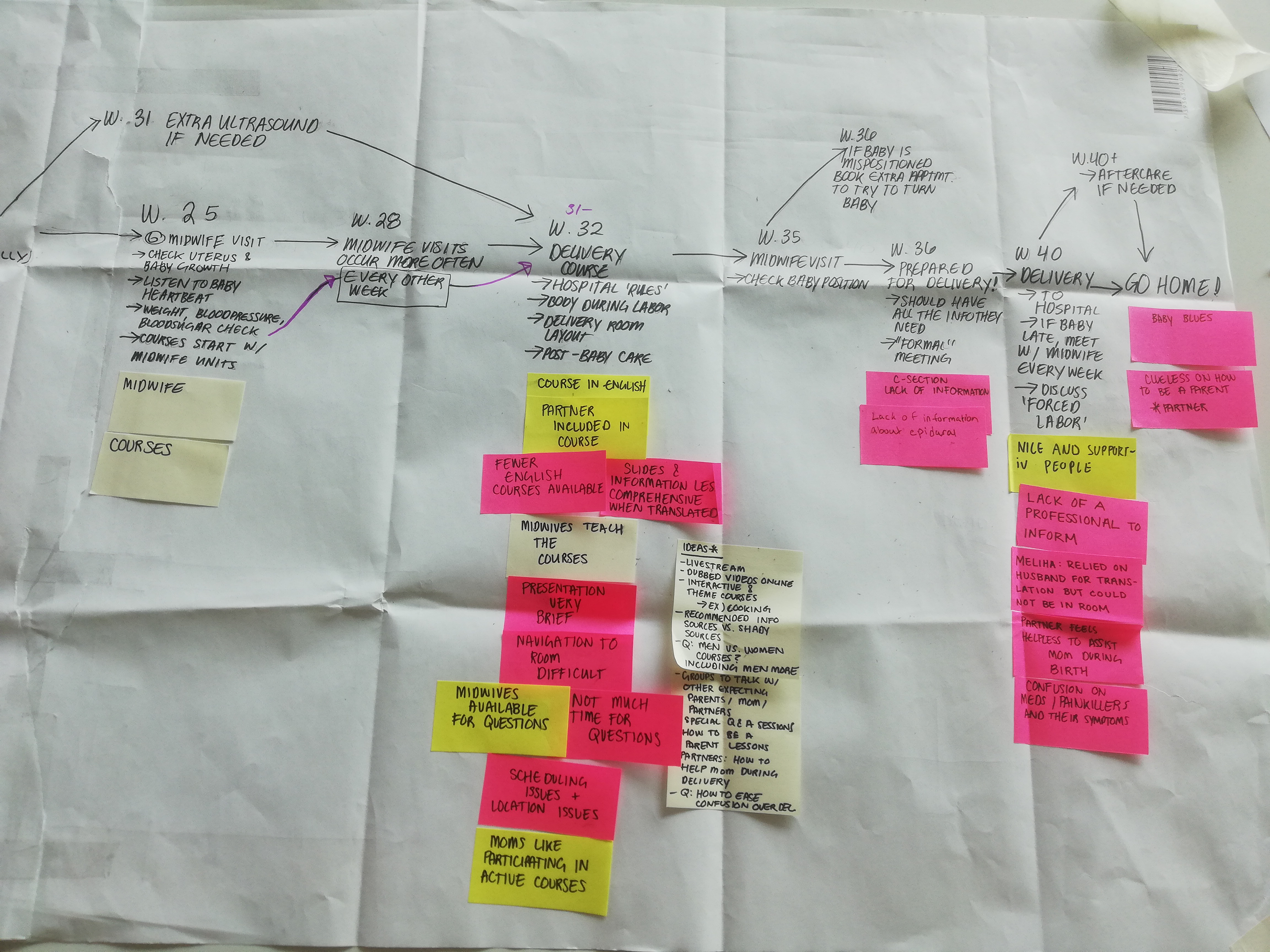co-Contributors
Haley Dabbs, Victoria Larsson, Felix Linden, Olive Murk Caya, Moritz Riedl
My Contributions
Skills developed
User research techniques (survey and interview techniques), research analysis techniques (research insight synthesis and analysis, visual representations), digital prototyping technique (Adobe inDesign and Illustrator mockups)
My role
I contributed to conducting user research by writing interview scripts and survey questions that were distributed to participants. I analyzed research findings and visualized insights for presentations to stakeholders. I contributed heavily to the visual design of the final prototypes.
Project Overview
Background
This project was an academic Service Design assignment in collaboration with Region Skåne in Malmö, Sweden. The assignment was to prototype an improved maternity care service and experience for first time expecting parents. Our group's project focus was on improving the educational materials available to first time expecting parents.
Goals
During research, we aimed to answer the following questions: How do we help to guide parents to the safest, healthiest, and most secure pregnancy possible? How can we utilize Region Skåne’s current services and the existing relationships between mothers and their midwives? Lastly, how can we incorporate technology into medical services in order to provide a smoother communication between midwives and their patients, and ultimately improves accessibility to reliable and customized educational information?
User Research
User groups
There were three user groups that we wanted to represent in our research. The first were Swedish first time expecting parents. The second group were non-native first time expecting mothers; following the advice of a midwife we consulted with, we decided to interview first time mothers representative of Sweden's rising non-native population, who aren't familiar with the Swedish language, medical system, or available healthcare resources. We also found it important to represent the point of view from the health care provider side. In Sweden, the primary care provider for expecting mothers is a Midwife who stays with them throughout their pregnancy.
Methods
We conducted interviews and surveys with first time expecting mothers. We signed up for a website called rullavagn.nu, where expecting parents can befriend each other, in order to find interview and survey participants. Because we were reaching out to parents who regularly discussed health care and who were very vocal about their experiences, our interview results may not have been representative of the average population. We also conducted secondary research on existing educational material frequented by expected parents. Some examples are mobile applications, medical providers, social media, and popular online forums.
RESEARCH ANALYSIS
After conducting research, we analyzed the information we gathered. First, we investigated the pros and cons of different informational resources that expecting mothers presently rely on, such as Midwives, call operatives, social media, and online forums. We also mapped mothers' experiences throughout their pregnancy in order to analyze overall experience as well as the different health care resources available to them at different points during their pregnancy.

Research Insights
From our research analysis, we constructed personas of the typical first time expecting mothers in order to define their different needs and concerns with the current health care system. We also constructed a visualization to represent the attributes of different educational resources available to mothers.


Problem areas
According to research insights, we defined four major problem areas that we wanted to address in our final service prototypes. First, there is a language barrier between educational resources and non-native expecting mothers. Second, partners want to feel more included during the health care process. Third, there is low motivation to self educate during the maternity process. Finally, different mothers want different amounts of medical details during the educational experience, but there is no way to customize this.





Solution Story boarding
Before we began prototyping, we constructed storyboards for the mothers' and midwifes' experience using our proposed service.


Final prototype
Finally, following our storyboards and research insights, we constructed a prototype and video presentation to explain solution.
Final prototype images and explanations






Video presentation
